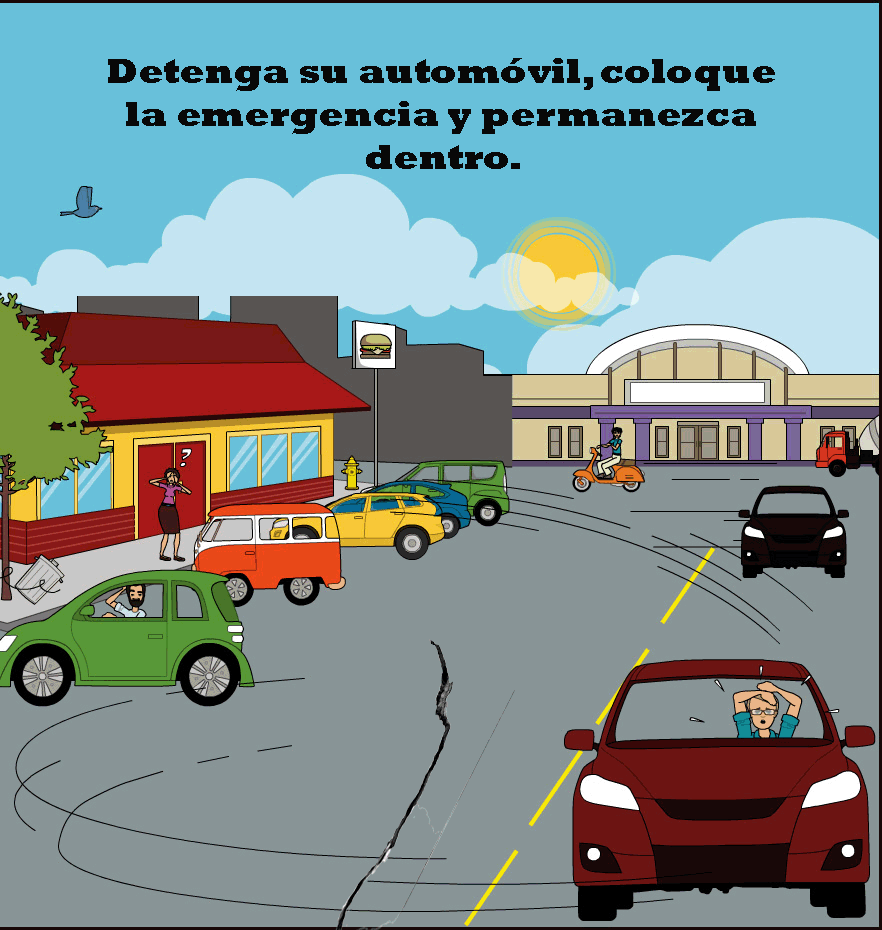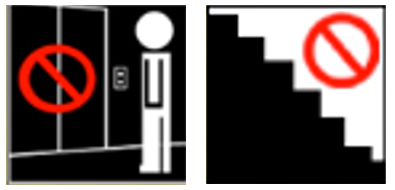No Warning, Advisory or Watch is in effect for Puerto Rico and the Virgin Islands.

No Warning, Advisory or Watch is in effect for Puerto Rico and the Virgin Islands.

Drop, Cover and Hold On! These three simple steps are the most recommended to save your life and avoid injuries during the onslaught of an earthquake. Always wait for it to stop shaking; then proceed to take the necessary actions established in your emergency plan, keeping calm.
If you can’t find a sturdy object where you can take cover, find a small or narrow place in the structure or against an interior wall, away from objects that may fall and cover your head with your arms in the following way (See fig. 2). You can also protect yourself under small furniture; you won’t be able to cover your body completely, but at least you can protect your head and neck.

Figure 1. Proper way to protect your head during an earthquake.
Collected from Shakeout.org

Figure 2. What to do if you are inside a building during an earthquake

Figure 3. What to do if you are outside during an earthquake
If you are outside of a building, it’s recommended to stay out of it. It’s recommended to look for an open place and protect yourself by dropping and covering yourself. You must stay away from poles, power lines, structures that can collapse and passable roads. See fig. 3. Remember to move carefully to the open area, considering that there may be live electrical wires or glass on the floor.
If you are driving a car and it’s a small earthquake it may not be perceived. But in a strong earthquake what you’ll do depends on where you are. If you are in a safe area where there are no poles or trees nearby and are not near the coast stop the car and stay inside. Pull the handbrake and protect your head with your arms. See fig. 4. If possible, protect yourself by placing yourself between the rear and front seats. If you are in your car and not in a safe place, be it on bridges, near bridges, power lines or near the coast, leave the car immediately and look from a safe place. If you are on public transport, urge others to stay calm and protect themselves.

Figure 4. What needs to be done in case of being in a car during an earthquake

Figure 5. Illustration of children moving away from the sea
Not all earthquakes generate a tsunami, but because most of the faults in our island are below water, they are more likely to occur. That’s why if we are near the coast and we feel an earthquake which we are unable to stand or if it lasts at least 20 seconds, we must evacuate immediately towards a high place or structure of 4 floors or more. All the coastal municipalities have their tsunami warning signs indicating which are the evacuation routes, places of assembly and if you are entering or exiting the tsunami-affected area (see the tsunami educational portal on our page for more details). These signs will tell you where to move, remember that the evictions are carried out on foot, you should not use your vehicle. For no motive, you must remain on the coast to see the tsunami. See fig. 5.
If you are in a multi-story structure you must stay where you are and look for a safe place to protect yourself. Elevator and stairs shouldn’t be used as these can be greatly affected by the earthquake and are not safe places. After it stops shaking you can check the state of the staircase and determine whether or not to use it, if it’s not in good condition stay where you are until rescue personnel assist you. See fig. 6.

Figure 6. Places that aren't safe during an earthquake.